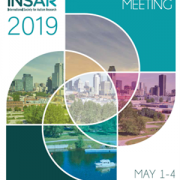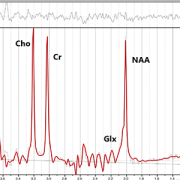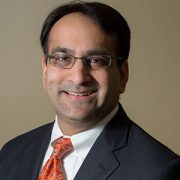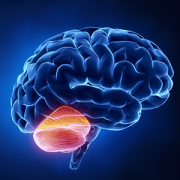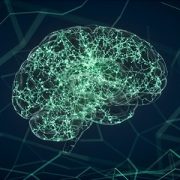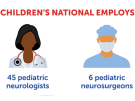Autism’s heterogeneity on display at INSAR 2019
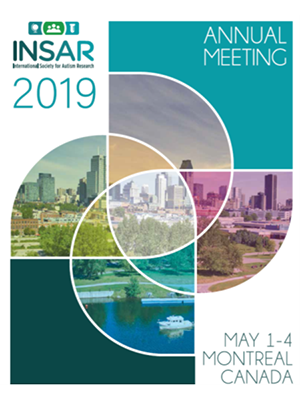
At the INSAR Annual Meeting, presentations from around the world share a common goal: finding better ways to support and care for people with autism.
There are countless aspects of autism spectrum disorder (ASD) to study, as evidenced by the 1,800-plus abstracts accepted at the 2019 International Society for Autism Research’s (INSAR) annual meeting. Presentations from investigators around the world ranged from pre-clinical studies of the genetic and biological underpinnings to community-based studies of diagnosis, assessment and treatment.
Along that broad spectrum of autism research, the work at Children’s National emphasizes better understanding of the clinical implications and community experiences of autism, with a particular focus on:
- How well diagnostic and assessment tools capture the many differences between subpopulations of children with autism, whether based on sex/gender identity, cultural background or age
- Understanding what children and adolescents with autism, and their parents, really need to help them thrive, and how to target supports to their unique needs
- Finding the best ways to deliver vital information to autistic youth and their families in clear and accessible ways.
Researchers from Children’s Center for Autism Spectrum Disorders (CASD) presented nearly 20 scientific panels, oral presentations and posters at INSAR highlighting their most recent findings in these areas.
In addition to their own research, the CASD team attended sessions from INSAR’s global community of researchers, clinicians, and others with vested interest in the study of ASD. Lauren Kenworthy, Ph.D., CASD’s director, shared some of her key takeaways from the meeting with the ASD-focused publication Spectrum.
“At many levels of analyses, we are learning that a diagnostic label may not always be the best construct for identifying, treating or probing the biology underlying a person’s problems,” she said. “The keynote by Jason Lerch, professor at Oxford University, for example, was an elegant synthesis of imaging and genetic findings that made a strong case for the importance of exploring subtypes within autism and across developmental and psychiatric problems.”
“We also received another powerful reminder of our field’s complex heterogeneity,” Dr. Kenworthy noted. “Katherine Gotham, assistant professor at Vanderbilt University, was able to divide groups of autistic individuals in a study according to different criteria than the study’s initial design and effectively erase what appeared to be clear, statistically significant differences between typically developing and autistic participants. Her presentation demonstrated once more the importance of looking deeply at our data from many angles before drawing conclusions based on study outcomes.”
These studies, both at Children’s and elsewhere, all share one common theme: the importance of asking these questions and exploring the answers, with the goal of finding better ways to support and care for the millions of people around the world with autism and their families, no matter what autism looks like for them.
CASD presentations at INSAR 2019
Panel presentation: Clinical Presentation of ASD and Access to Care Among Girls
Allison Ratto, Ph.D., chaired a panel focused on the differences in performance on standard diagnostic tools based on the sex of autistic youth. The panel included presentations such as:
- Sex Differences in Youth with ASD: Language Phenotype and Relation to Autism Behaviors from the ACE GENDAAR Network, presented by Sara Jane Webb of the University of Washington
- Social Strengths of Autistic Girls: Sex Differences in Clinician-Rated and Parent-Reported Autistic Traits, presented by Dr. Ratto
- Gender and Psychiatric Symptoms among Youth with ASD and ADHD, Alyssa Verbalis, Ph.D.
- Evidence for Undertreatment of ADHD in Girls with ASD in the National Survey of Children’s Health, Kelly Register-Brown, M.D., MSc.
Oral and poster presentations
Oral session: Comparing Online and in-Person Parent Trainings to Support Executive Function and Self-Regulation: Feasibility, Acceptability, and Outcomes, presented by Lauren Kenworthy, Ph.D.
Poster sessions:
- Executive Function and School-Based Interventions
- Self-Report and Parent-Report Reveal Similar Patterns of Executive Function Problems in Autistic Adolescents, presented by Rachael Clinton and Charlotte Jeppsen
- What Services Are Families of Children with Executive Function Challenges Getting? What Do Parents Say They Want?
- A Mixed Methods Approach to Evaluation of Student Acceptability of the School-Based Interventions Unstuck and on Target and Parents and Teachers Supporting Students
- A New Way to Help Parents? Exploring the Impact of School-Based Interventions on Parenting Outcomes
- Executive Function and Academic Achievement in Autism Spectrum Disorder
- Development of an Interactive, E-Learning Tool to Support Parent Implementation of an Executive Function Intervention
- The Moderating Effects of Implementation Factors on Improvement in Classroom Behaviors in Unstuck and on Target and Contingency Behavior Management
- Youth with ASD making the transition to adulthood
- Preliminary Outcomes of a New Executive Function Treatment for Transition-Age Youth with ASD, presented by Cara Pugliese, Ph.D.
- Self-determination in transition-aged individuals with autism spectrum disorder.
- ASD population subgroups, including gender and ethnically diverse:
- Parent-Teacher Discrepancy in Ratings of Executive Functioning in Black and White Children with ASD, presented by Serene Habayeb
- Capturing the Autistic Experience: Self-Advocates Develop Self-Assessment Tools to Inform Autism Diagnosis and Validate Neuroimaging Findings across the Gender Spectrum
- Comparing Parent-Report of Non-Intellectually Disabled Asian-American Youth with ASD and ADHD to Their White Peers
- Autistic Traits in Transgender Youth: Dysphoria, Stigma, and Barriers to Care
- Higher Rates of Gender Diversity in Children with ASD Based on Self-Report, Not Parent Report


